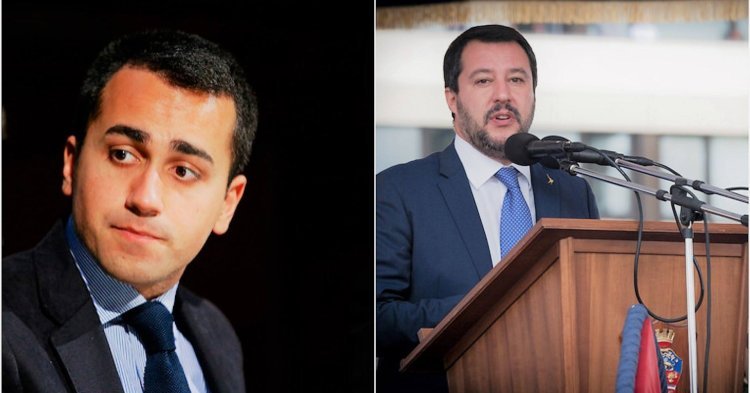No other European state has experienced such degradation. In 2018, Italy recorded the highest number of alerts compared to all other EU countries, positioning at the same level as Russia (13 alerts) and right behind Turkey and Ukraine (14 alerts). Moreover, in Ukraine the state responded to 12 out of the 14 reports, while the Italian government, unlike previous years, did not give any answer for the alerts published throughout 2018. In addition, 31% of this year’s alerts in Italy were classified as level 1, the one reporting the greatest severity.
Social media and populism in Italy
In Italy the problem concerning press freedom begins within the population and its increasing lack of trust in the media. According to the 2018 Edelman Trust Barometer, a global survey on the issue of trust towards business, government, NGOs and media conducted in 28 countries on a sample of 33,000 people; the situation in Italy is far from being comforting. Indeed, after the US, Italy appears to be the country with the most marked decline in overall confidence compared to the previous year. The trust in the media also decreased in the country with respect to 2017, specifically the average trust in search engines and social media platforms.
These data are relevant when compared to the growing use of social media as a source of information. A recent study, developed by Paul-Jasper Dittrich at the Jacques Delors Institut in Berlin, showed that half of the adult population in every European state now has a profile on Facebook and uses it at least occasionally to read political news. This tendency is even higher among youth, and Italy is not an exception. In fact, more than 60% of young Italians utilise Facebook as a weekly source of news.
According to Dittrich, this trend has been followed by greater use of social media by populists as a means of political communication and mobilisation, increasing the overall level of political polarisation. In Italy, the two populists party governing the country, the 5-Star Movement and Lega, doubled their numbers of followers in the period between 2015 and 2016, with a consequent stagnation of the traditional parties. This situation is thus compromising the institutionalised forms of democratic debate, silencing criticism and undermining the traditional media.
As outlined by Sven Engesser et al, populists use social media to attack the elite, or rather the ones who are considered as “the enemy of the people” and responsible for the failures of democracy. The elite represents a distinct subsystem of society, such as traditional media outlets that are usually accused of being corrupted and biased. Populists thus attack them through the use of a harsh tone on social media, and as a matter of fact, the network logic of Twitter and Facebook works perfectly with pejorative terminology, which makes posts viral and increases popularity.
An example of this is the Facebook post published this November by Luigi Di Maio on his official page for the acquittal of the Rome mayor Virginia Raggi, accusing Italian journalists of writing “pages and pages of fake news” on her and of being “jackals” and “corrupt”. Social media popularity and success of the two leaders of the populist parties governing Italy at the moment, Salvini and Di Maio, has grown exponentially in the last months. From the beginning of the year to September 2018, Salvini saw his number of Facebook fans grow from 1,975,000 to 3,143,000; while Di Maio’s follower count increased from 1,165,000 to 2,063,000.
Di Maio and Salvini’s posts addressing Italian journalists
Taken into account what I have just presented, I believe it is relevant to analyse how these two leaders of the populist parties holding power in Italy talk about journalists and the media on Facebook and Twitter. Therefore, I conducted a research to understand whether they use pejorative terminology to describe the whole category and if they address it to specific journalists and newspapers, comparing the language used by the two politicians to express their opinions on the topic.
I then decided to collect tweets and Facebook posts from Di Maio and Salvini’s official accounts during the months of October and November 2018. I narrowed this down to posts containing one of these words: media, press, newspapers and journalists. I then obtained 74 Facebook posts and 10 tweets from Di Maio’s accounts, and 52 Facebook posts and 15 tweets from Salvini’s accounts.
In the first place, it is interesting to notice that, while both of them write mostly negative content regarding Italian media and journalists, they differ on whom they specifically target and how. Di Maio mainly attacks media by accusing them of disseminating fake news and discrediting the work of the 5 Stars Movement spreading disinformation. He contraposes the newspapers to himself as if he were the only bearer of truth, who tries to counter the “fake news” shared by the traditional media outlets through the help of the population. To support his arguments, Di Maio mostly shares content coming from the blog of the Movement.
Salvini instead uses a different strategy to indirectly attack journalists and newspapers who are in disagreement with his ideas. He portrays himself as the victim acting for the good of the Italian citizens, who is then systematically threatened by the establishment. He also plays with the contraposition between “us” and “them”, underlining how the newspapers that disapprove his work represent the elite and are also the ones responsible for the current difficult economic situation of Italy, while he is the person making real efforts to improve the country’s conditions.
Another difference between Salvini and Di Maio is that the former mixes the EU and its institutions into his criticisms against Italian media. Salvini appears to portray journalists together with the EU as part of the establishment that tries to obstruct the government’s work. It is also relevant to notice that he usually ends his posts by saying that he has no time to answer to any of these attacks because he has to work for the country. He implies that he is the one doing the real efforts to improve the Italian situation, while all the others waste time on unnecessary criticism.
On the one hand, we can say that both politicians use negative language when referring to the Italian media sector or to Italian journalists expressing different views from the ones of their parties. On the other hand, there are some differences in the way they speak about Italian journalists.
Di Maio mostly uses very harsh words to describe journalists and their work, occasionally insulting them; openly showing his dislike for the category as a whole. The attacks made by Salvini are instead mainly addressed to journalists and newspapers sympathising with the left. Additionally, Salvini uses those critics to play the role of the victim, threatened while working for the wellbeing of the Italians.






Follow the comments: |
|
